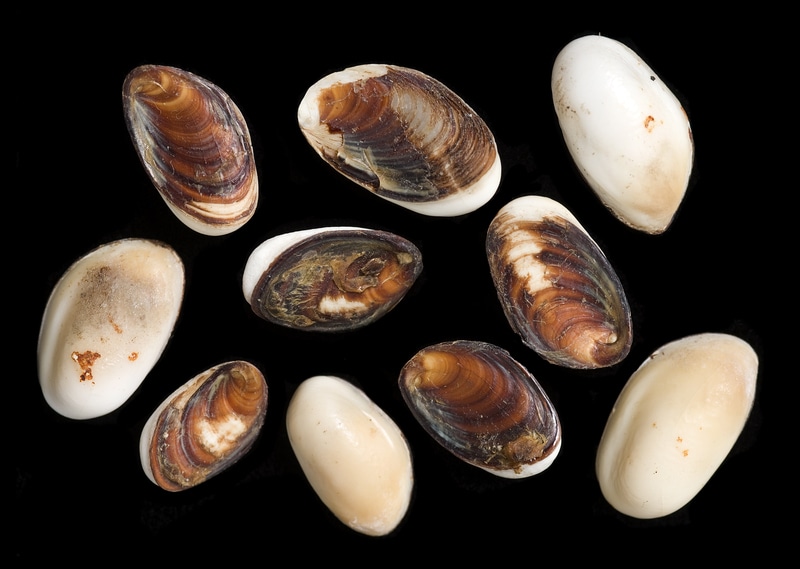Shell Item Number: 1924.33.16 from the Pitt Rivers Museum

Description
10 opercula of shells. [LM 'DCF 2004-2006 What's Upstairs?' 1/8/2005]
Longer Description
10 opercula of shells. Stored in a small box. Each operculum is cream-coloured and rounded on one side, with a brown striated flat surface on the other. [CAK 23/06/2009]
Research Notes
Opercula are often used to decorate bentwood boxes and grease dishes, or used as teeth on masks. [CAK 23/06/2009]
The following information comes from Haida delegates who worked with the museum's collection in September 2009 as part of the project “Haida Material Culture in British Museums: Generating New Forms of Knowledge”:
The opercula were viewed with items of personal adornment on Friday Sept 11, 2009. Gaahlaay (Lonnie Young) explained that these are snail shells. They are found stuck to rocks. Much larger ones exist and are also eaten. [CAK 17/05/2010]
Primary Documentation
Accession book entry - C. HARRISON, Esq. Specimens collected from the HAIDA of QUEEN CHARLOTTE ID., B.C.... - Opercula of shells, used for ornamenting boxes etc., obtained at the head of KUMSHEWA INLET
No additional information on catalogue cards. [JC 5/9/1996]
Pitt Rivers Museum label - CANADA QUEEN CHARLOTTE IS HAIDA Opercula of shells Don. C. Harrison 1924 [MJD 01/04/2009]
Written on box - Opercula of shells, used for insetting in wooden boxes etc. for decoration. HAIDA, QUEEN CHARLOTTE ID. Obtained at the head of KUMSHEWA INLET. Pres. by C. Harrison, 1924 [LM 'DCF 2004-2006 What's Upstairs?' 1/8/2005]
Related Documents File - Typed label: [illegible deletion] Opercula from Shell-fish obtained at the head of Kumshewa Inlet, which the Ancient Haidas used for ornamenting their boxes etc. C. Harrison [LM 'DCF 2004-2006 What's Upstairs?' 1/8/2005]
Related Documents File - The Haida Project Related Documents File contains video of research sessions and interviews with Haida delegates from September 2009 as part of the project ‘Haida Material Culture in British Museums: Generating New Forms of Knowledge'. It also includes post-visit communications that discuss object provenance. For extensive photographic, video, and textual records documenting the Haida research visit as a whole, including but not limited to preparations of objects for handling, travel logistics, British Museum participation, transcribed notes from research sessions and associated public events held at PRM, see the Haida Project Digital Archive, stored with the Accessions Registers. Original hand-written notes taken during research sessions have been accessioned into the Manuscripts collection, in addition to select other materials. [CAK 02/06/2010]
Item History
- Made in British Columbia Queen Charlotte Islands Cumshewa Inlet, Canada
- Collected by Charles Harrison
- Received from Charles Harrison during 1924
What
- Name
- Shell
- Identification Number
- 1924.33.16
- Type of Item
- shell
- Material
- operculum shell
- Overall
- length 15.0 mm
Who
- Culture
- Haida
- Field Collector
- Charles Harrison
- Received from
- Charles Harrison
Where
- Holding Institution
- Pitt Rivers Museum
- Made in
- British Columbia Queen Charlotte Islands Cumshewa Inlet, Canada
When
- Acquisition Date
- during 1924
Other
- Keyword
- Shell; Specimen; Ornament; Food
- Class
- Animalia; Specimen; Ornament; Food